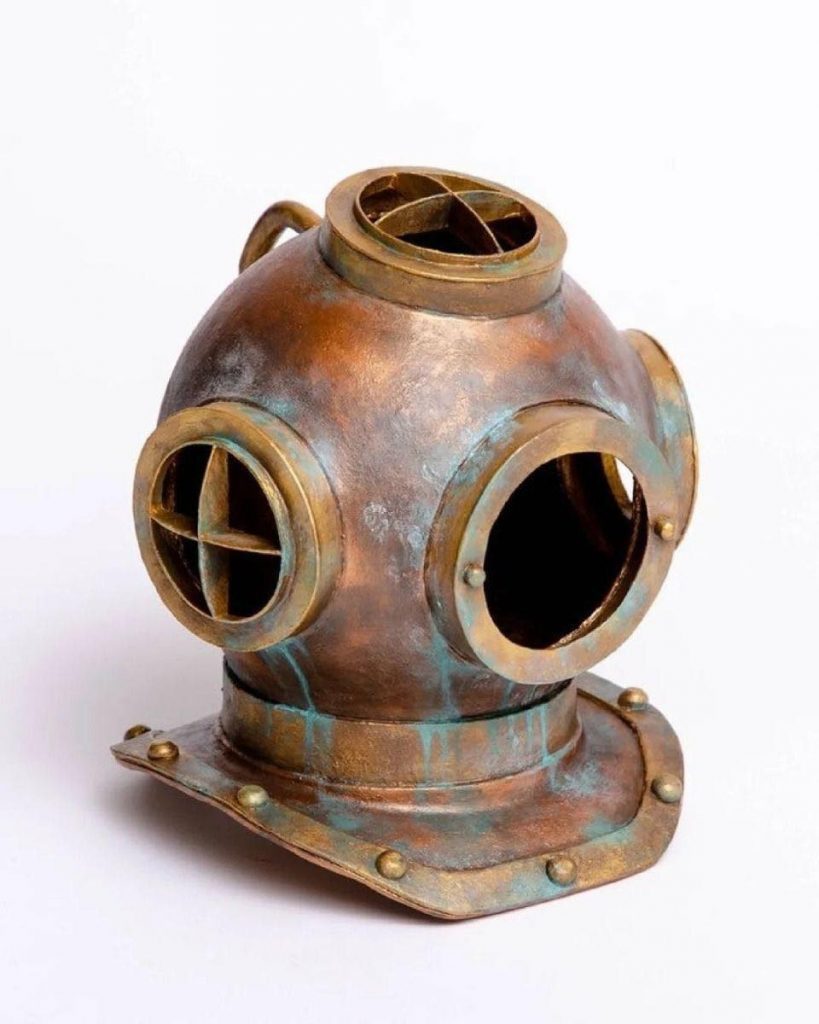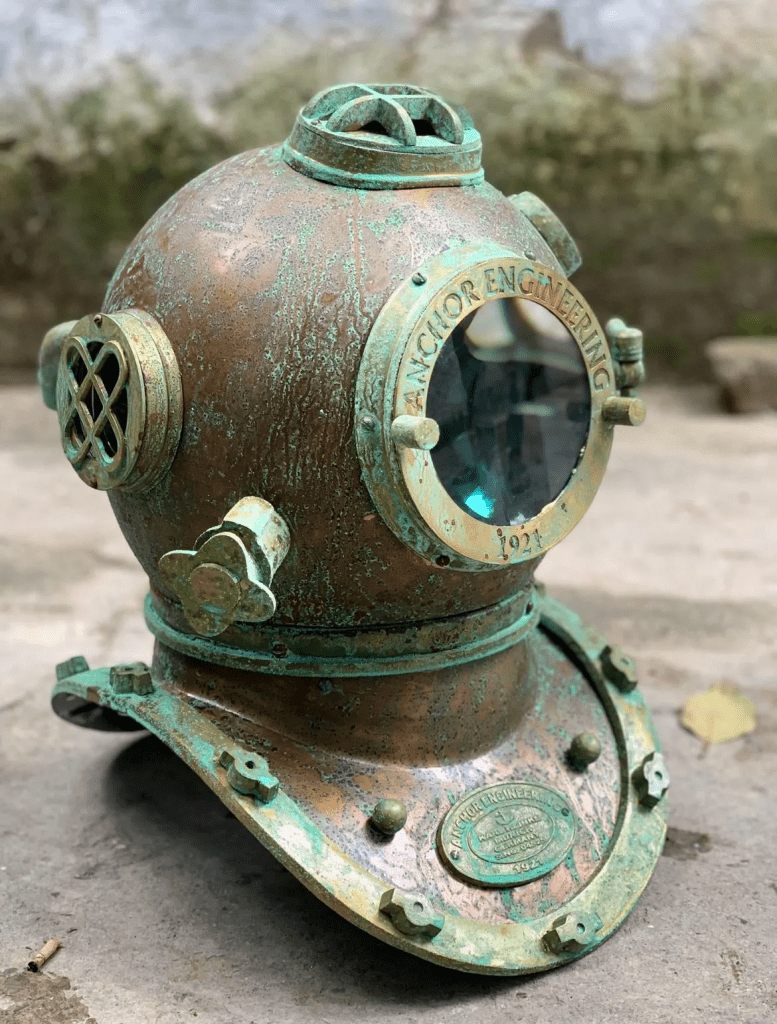The Helmet That Made Early Deep-Sea Diving Possible
Long before modern scuba gear, venturing beneath the waves was a dangerous and daring task. This heavy, metal helmet, known today as an antique diving helmet, allowed divers to explore the ocean depths while tethered to the surface—a tool of both survival and invention during the 19th and early 20th centuries. Let’s dive into the story of this fascinating relic.
Origins of the Antique Diving Helmet
The diving helmet was developed during an era when underwater work was growing in importance. Ship repairs, salvage operations, and underwater construction required a way for humans to breathe while submerged for extended periods.

Constructed from copper or brass, these helmets were designed to resist corrosion in seawater. The design was simple but effective: a heavy helmet connected to an air supply above the surface, forming the foundation of early deep-sea diving technology.
Design and Features: A Mix of Engineering and Craftsmanship
The helmets were crafted with both utility and safety in mind:
- Portholes: Circular glass windows on the front and sides provided vision, often reinforced to withstand water pressure.
- Air Valve and Connection Ports: These allowed a continuous flow of air from the surface, keeping divers alive and controlling pressure inside the helmet.
- Heavy Construction: The helmet’s weight, combined with a thick diving suit and lead-soled boots, helped divers stay grounded underwater.
Some helmets were elaborately decorated, showcasing the skill of the craftsmen who made them. Beyond function, they were often works of art, reflecting the pride and prestige of the diving profession.
Video : Antique Diving Helmet Collection Sale Notice
How It Worked: Breathing Under Pressure
A diver would don the helmet and suit, then descend while air was pumped down from the surface through hoses. The helmet’s valve system regulated air pressure, keeping water out while supplying oxygen. Communication with the surface could also be established using early telephone lines integrated into the helmet assembly.
It was a risky process—any leak, blocked valve, or equipment failure could be fatal. Yet, despite the dangers, divers could work for hours at depths previously unreachable, performing critical tasks from salvaging shipwrecks to underwater construction.
Historical Significance: Deep-Sea Work in the 19th and 20th Centuries
These helmets were central to maritime industries:
- Ship Repair and Maintenance: Divers could inspect hulls, propellers, and underwater components.
- Salvage Operations: Precious cargo from sunken vessels could be retrieved.
- Scientific Exploration: Early oceanographers and engineers used them to study underwater environments.

The helmet represents a critical step in humanity’s ongoing quest to explore and understand the ocean. Without it, modern diving and subsea engineering would have been delayed by decades.
Popular Names and Types
Over time, several names became associated with these helmets:
- Diving Helmet: A general term used globally.
- Deep-Sea Diver Helmet: Highlighting its function in sub-aquatic operations.
- Mark V Helmet: Specifically referring to the American style used widely from the 1910s to 1940s.
Each type reflects regional variations, improvements in technology, and specific operational requirements.
Legacy and Collectibility
Today, antique diving helmets are sought after by collectors, maritime museums, and enthusiasts. They stand as symbols of human ingenuity and courage—tools that allowed people to enter a world previously inaccessible.
- Collectors value: Patina, maker’s marks, intact glass portholes, and original valves all contribute to authenticity.
- Museums: Helmets are displayed alongside diving suits, hoses, and related equipment to illustrate the evolution of underwater technology.
- Cultural Impact: These helmets have inspired everything from literature to steampunk art, demonstrating their lasting aesthetic and historical influence.
Video : Rare United States Navy Mark IV A Schrader’s Son Diving Helmet!
Conclusion: A Relic of Courage and Innovation
The antique diving helmet is more than just a piece of metal; it is a testament to human daring and ingenuity. It allowed explorers to breathe, work, and survive in the ocean’s depths when every dive was a gamble.
Today, it rests quietly in museums or private collections, a symbol of the bravery of early divers and the remarkable evolution of underwater technology. Holding one is like holding a piece of history—a reminder of the risks, the craftsmanship, and the relentless human drive to explore the unknown.